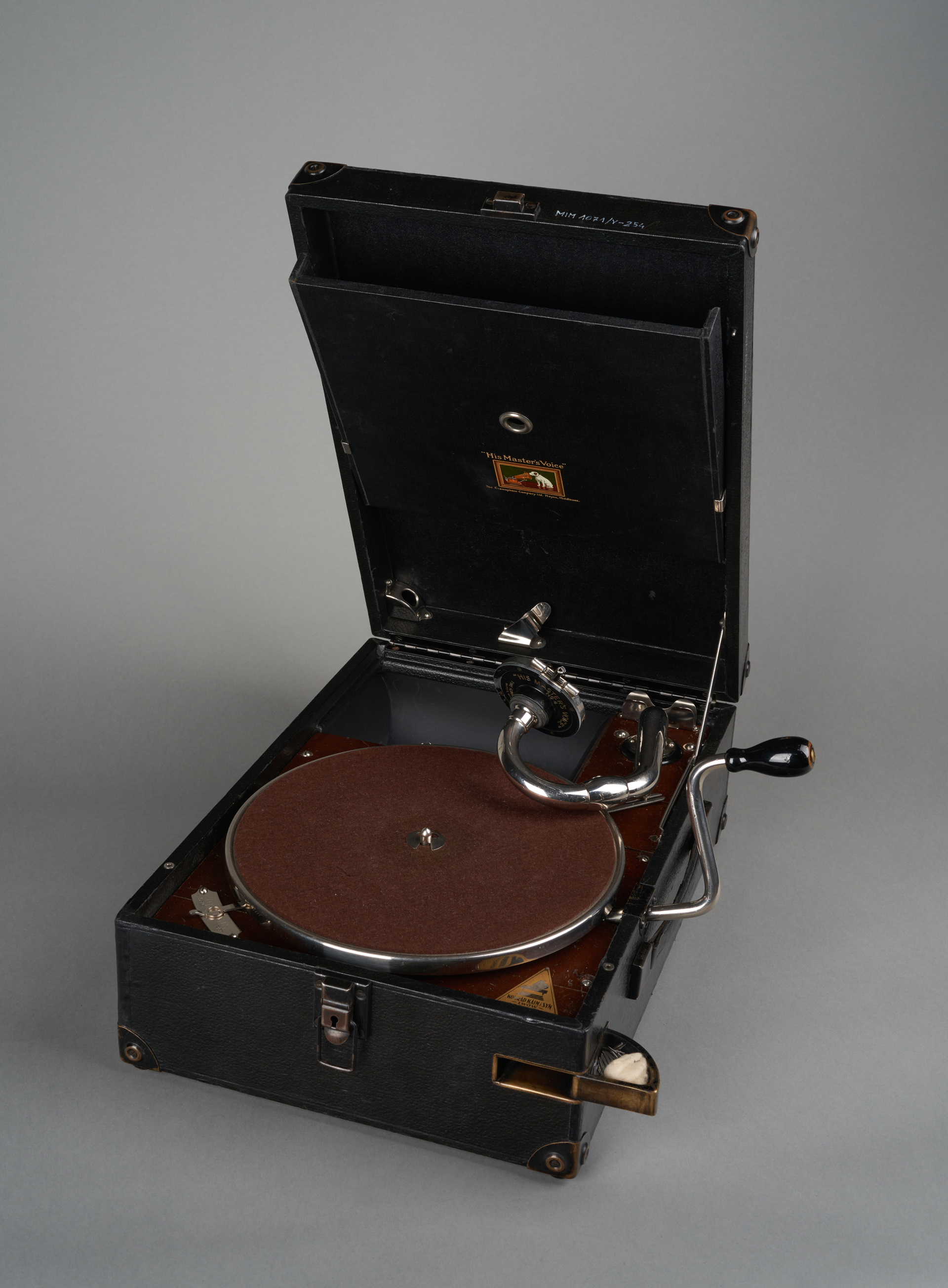
His Master’s Voice 101 suitcase gramophone
The Gramophone Company Ltd., / 1925 - 1931Creator
The Gramophone Company Ltd.
Time and place of creation
Time:
1925 - 1931
His Master’s Voice 101 (HMV 101) is a portable box gramophone with a handle, enclosed in a wooden housing. It was manufactured in the United Kingdom between 1925-1931 by The Gramophone Company Limited, established in London in 1898 by Edmund Williams and William Barry Owen. The company had a strong presence on the phonographic market and mostly sold gramophone records. The records bore a logo representing a fox terrier listening to the voice of his master coming from the speaker cone. The HMV 101 complemented the product range of the company. The turntable mechanism on which the gramophone records were placed is set in motion by a crank-wound spring hidden inside the device. The gramophone head with a mica membrane, His Master’s Voice No. 4, is intended for so-called “hard records”, i.e., those made of hard rubber or shellac, played at 78 rpm. The gramophone has a built-in horn speaker, whose resonating cone doubles as a container for the adapter arm. Not only was the folding arm an innovation, but so was the design of the gramophone as a portable device. Wooden cases for keeping the HMV gramophone were usually covered with waterproof black leather and had metal fittings on the corners. Such a model cost £7.00, and for a little more – £7.50 – one could buy versions bound in red, green, or blue leather. On the inside of the cover there is enough room to store six records with the manufacturer’s logo, and the crank. Inside the gramophone box, on the plane to which the brown-felt-covered turntable was installed, is the triangular plaque of the Polish seller, which has a piano-shaped logo and the inscription “Konrad Kaim i Syn, Lwów, ul. Kopernika 11” (Konrad Kaim ran a store selling grand pianos, upright pianos, accordions, gramophones and records, and he was also the owner of the three-story tenement building at the address on the plaque from where he escaped during World War II). The case also contains other components of the gramophone, such as the moving gramophone arm, the turntable, the turntable speed dial (“slow”, “fast”) and a socket for the crank located on the right side of the case. The gramophone’s metal components were nickel plated, which gave them a glossy appearance and additional corrosion protection. It is worth noting that in the first model, the crank opening and socket was at the front. At the break of 1926 and 1927 the layout was changed by moving the crank and socket to the side. In the front right corner, there is a slide-out compartment for gramophone needles.
Author: Filip Wróblewski
His Master’s Voice 101 suitcase gramophone
The Gramophone Company Ltd., / 1925 - 1931Creator
The Gramophone Company Ltd.
Time and place of creation
Time:
1925 - 1931











